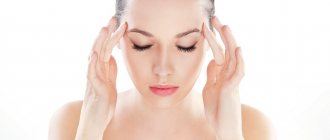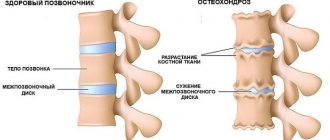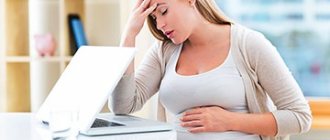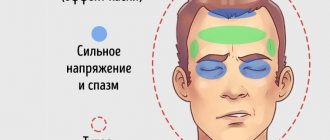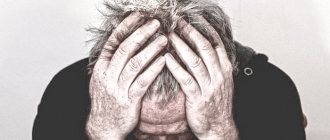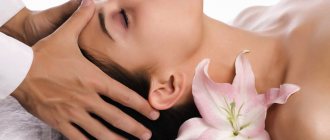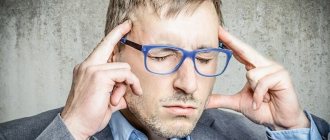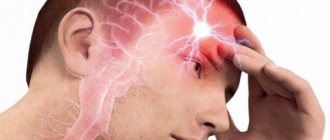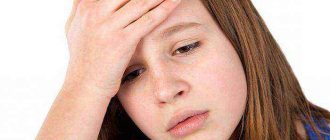pharmachologic effect
Drotaverine hydrochloride is an isoquinoline derivative with a powerful antispasmodic effect on smooth muscles.
This effect is possible due to the inhibition of an enzyme called PDE (phosphodiesterase). PDE is involved in the hydrolysis reaction of cAMP to AMP. Inhibition of phosphodiesterase is characterized by an increase in the concentration of cAMP, which triggers a chain reaction. High concentrations of cAMP are an activator of cAMP-dependent phosphorylation of MLCK (myosin light chain kinase). This leads to a decrease in the affinity of MLCK for the Ca2+-calmodulin complex, and the inactivated form of MLCK creates muscle relaxation.
cAMP affects the cytosolic concentration of Ca2+ ion, lowering it. This is due to the stimulation of Ca2+ transport into the sarcoplasmic reticulum and extracellular space.
The effectiveness of drotaverine hydrochloride depends on the concentration of the phosphodiesterase enzyme in tissues, which varies significantly.
Hydrolysis of cAMP in cardiac muscle tissue and vascular smooth muscle is carried out using the PDE3 isoenzyme. This explains the absence of serious adverse reactions from the cardiovascular system with high antispasmodic activity.
Selective PDE4 inhibitors, which is drotaverine, can reduce the sensitivity of the uterus to the action of the hormone oxytocin and lead to accelerated relaxation of the muscle tissue of the organ, which helps stop premature birth.
In addition to the antispasmodic effect, drotaverine reduces swelling and inflammation in muscle tissue. Elimination of spasm leads to improved blood supply to organs. The drug is effective for pain, and also helps restore the passage of the internal contents of hollow organs.
At the same time, drotaverine does not directly interfere with the mechanism of pain sensitivity and does not erase the symptoms of acute conditions, unlike analgesics.
The effectiveness of drotaverine is high for spasms of smooth muscle tissue of neurogenic and muscular origin. No-spa relaxes the smooth muscle fibers of the gastrointestinal tract, genitourinary and biliary tract.
Pharmacokinetics
After oral administration, the active substance is completely and quickly absorbed, evenly distributed throughout the tissues and penetrates into smooth muscle cells. About 65% of the active substance enters the blood. The maximum concentration in the blood is determined 45-60 minutes after administration. Passes slightly through the placental barrier. Does not enter the central nervous system and does not affect the autonomic nervous system.
When administered intravenously or intramuscularly, drotaverine binds to plasma proteins by 95-98%, achieving maximum effect after 30 minutes.
Metabolism of the substance occurs in liver cells through O-deethylation reactions. Drotaverine metabolites are conjugated with glucuronic acid.
It is excreted by the kidneys (more than 50%) and intestines (30%) in the form of metabolites, complete elimination occurs within 72 hours.
Prevention of cerebral vascular spasms
Nutrition for brain vessels
As trivial as it may seem, vascular tone depends on a healthy lifestyle. First of all, it is quitting smoking and excessive drinking. The air, water and soil are already polluted by emissions from chemical plants and automobile fumes. A person aggravates his health with cigarette smoke and alcohol.
The second preventive measure is nutrition. The predominance of animal fats in the diet and refined foods from fast food establishments gradually destroy blood arteries.
Cholesterol plaques stick to the walls and narrow the lumen of blood vessels.
Food for healthy blood vessels is:
- cereals vegetables and fruits low-fat dairy and fermented milk products poultry and lean fish berries and freshly squeezed juices legumes seafood
The ban is imposed on any semi-finished products and products with flavor enhancers (monosodium glutamate). It is imperative to maintain a water regime - a lack of water contributes to blood thickening, which can lead to the formation of blood clots.
The third stage of prevention is exercise. Physical activity, even if it’s just walking up the stairs or walking home from work, ensures adequate blood supply to internal organs and organizes the delivery of oxygen to the brain. The intensity of exercise does not matter for healthy blood vessels - physical activity can be minimal, but regular.
Healthy blood vessels need time to recover: at least 8 hours of full sleep. You need to sleep in a cool room, preferably on an orthopedic mattress (or a comfortable bed), so that the body can relax.
Chronic stress greatly depletes blood vessels. During the manifestation of emotions, the level of pressure increases, the smooth muscles of the blood vessels intensively contract and relax. Every event taken to heart, worries and anxieties ultimately lead to spasm. People at risk should be especially attentive to their health.
Angiospasm is an extremely dangerous pathology that can cause disability or premature death of a person. Constantly repeating symptoms characteristic of spasms of the cerebral arteries are a reason to seek help from a specialist.
Noticed a mistake? Select it and press Ctrl+Enter to let us know.
Price No-shpa
You can buy a prescription form of the antispasmodic with instructions through an online pharmacy. To do this, you order delivery of the medicine to a convenient point of delivery, and provide the prescription to the courier or show it to the parcel delivery manager. The price of the antispasmodic depends on the place of sale, the availability of a discount and the form of release. The cheapest modification of the medicine is tablets. Below is the cost of this antispasmodic in various online pharmacies:
| Pharmacy name | Release form | Price, rubles |
| ElixirPharm | table 6 pcs. 40 mg | 52,50 |
| Pharmacy chain "5mg" | table 100 pieces. 40 mg | 238,00 |
| ZdravZone | ampoules 5 pcs. 2 ml | 88,00 |
| Dialogue | table 24 pcs. 40 mg | 98,00 |
| Liquitoria | ampoules 25 pcs. 2 ml | 1408,00 |
Useful information about health
The tablets are yellow with a greenish or orangish tint, round, biconvex, with “spa” engraved on one side. Excipients: magnesium stearate - 3 mg, talc - 4 mg, povidone - 6 mg, corn starch - 35 mg, lactose monohydrate - 52 mg. Antispasmodic agent, isoquinoline derivative. Inhibition of PDE4 leads to an increase in cAMP concentration, inactivation of myosin light chain kinase, which subsequently causes relaxation of smooth muscles. Therefore, the effectiveness of drotaverine depends on the concentration of PDE4 in different tissues.
Dosage and rules of administration
No-spa is sold in pharmacies without a prescription; it can alleviate many painful conditions, but it is unacceptable to use this remedy uncontrollably.
Like any medicine, this antispasmodic should be used according to the instructions :
- Adults can take 1-2 tablets of the drug 2-3 times a day. The daily dosage for adults should not exceed six tablets.
- Children from six to twelve years of age should not take more than two drotaverine tablets per day. It is advisable to divide this dosage into four doses.
- Children over 12 years of age can take up to four tablets per day in several doses.
The drug is contraindicated in patients with liver, heart and kidney failure. No-shpa can be drunk periodically to relieve pain symptoms. But you should not take the product for more than two days in a row. If the pain persists, it is advisable to consult a doctor to find out the cause of its occurrence. Only the attending physician can prescribe No-shpa as a course .
During pregnancy and breastfeeding, one-time use of No-shpa is not prohibited . The drug relieves pain in the lower abdomen, which often accompanies the process of breastfeeding. If the gynecologist prescribes long-term treatment with an antispasmodic drug, then it is better to stop breastfeeding the child during this period.
No-spa is an excellent patented remedy for spasms and colic, which should always be at hand, along with analgesics and first aid. Colic can start suddenly, and the patient needs to be helped as quickly as possible.
Attention, TODAY only!
Reviews
“In my opinion, this is the easiest pain reliever that can be taken at a critical moment, and which, moreover, does not have any unpleasant side effects. It always helps me and almost immediately. For mild pain it works great, but for severe pain sometimes you have to take a second tablet. I haven’t tried to use no-shpa intravenously, and I don’t want to, I prefer to limit myself to a couple of tablets than to take injections.”
“Several years ago, it literally saved me from nightmare pain on women’s days: the pain disappeared literally 10 minutes after use. But then either addiction arose or something else: now no-shpa is of no use. When, after a few hours, the pain finally goes away, you don’t understand: either it went away on its own, or the medicine still worked. Another disadvantage of no-shpa: it causes terrible nausea. Lately I’ve been wanting to give it up and try other medications.”
“Firstly, no-spa still helps with mild pain. Secondly, the convenient packaging of 100 tablets allows you to take it with you anywhere. There are also packages for a smaller number of tablets, and a shock absorption system is provided: the box does not open or fall apart, the most convenient jars, from which the tablets fall out when pressed. Well, and, of course, the relatively low price of around 200 rubles makes no-shpa the best antispasmodic for me.”
Interaction
Like other PDE inhibitors similar to papaverine, drotaverine weakens the antiparkinsonian effect of Levodopa. When taking these drugs in combination, tremor and rigidity may increase.
There are no data on the interaction of the substance with drugs that significantly bind to plasma proteins; however, their interaction is hypothetically possible at the level of protein binding (one of the drugs may be displaced from this bond, as a result of which the concentration of the free fraction of the drug in the patient’s blood will increase, whose binding to the protein is weaker).
In combination with other antispasmodics (including m-anticholinergic blockers), a mutual enhancement of the antispasmodic effect is noted.
A significant part of the dose of drotaverine taken is in a state associated with plasma proteins (mainly with β-, γ-globulins and Albumin).
Hypothetically, this is fraught with the occurrence of toxic and/or pharmacodynamic effects of such a drug.
Symptoms
The causes of the problem can be hidden both in the brain itself and in the spine, because arteries supplying blood to the brain pass through its cervical spine.
Problems in the brain can be caused by various conditions when a person is very tired for a long time, lacks sleep, or when the body lacks oxygen. The human brain also gets tired, like other parts of the body. When he works long, hard and does not get enough rest, the blood supply deteriorates, as does the condition of the vessels themselves through which the blood passes. In addition, some diseases provoke the development of spasms of cerebral vessels. For example, hypertension very often causes vascular spasms.
- Overwork;
- Stressful situation;
- Lack of sleep;
- Lack of oxygen;
- Age-related changes in the condition of blood vessels;
- Smoking.
- Osteochondrosis of the cervical spine;
- Hypertonic disease;
- Heart failure;
- Vegetative-vascular dystonia;
- Impaired kidney function;
- Thyroid diseases;
- Brain tumors.
In any situation, you should at least try to maintain calm and composure, as excessive emotions undermine the nervous system.
This affects the blood vessels and heart, and various diseases develop. Blood vessels can react to emotional outbursts even against the background of complete health. Such spasms can be caused, for example, by a strong quarrel or mental trauma. Changes in the weather can also provoke a reaction in the brain vessels in weather-sensitive people. Sudden changes in atmospheric pressure are especially dangerous.
Several decades ago, cerebral vasospasm occurred mainly in older people. This is due to age-related changes and loss of vascular elasticity. However, recently, much more often younger people suffer from this problem, and most of them are residents of large cities.
Normal blood flow and blood flow during spasm
The environmental situation in large populated areas plays an important negative role. Toxic substances, emissions from factories and cars contained in the air, and huge amounts of dust negatively affect blood vessels and, in general, the condition of the entire body as a whole. In addition, in large cities there is always a lack of oxygen in the air. All this causes narrowing and sometimes spasm of blood vessels, including those of the brain.
- People whose relatives have had a heart attack or stroke;
- Patients with hypertension, angina pectoris;
- Suffering from diabetes;
- Heavy smokers or alcoholics;
- People whose body is prone to thrombosis;
- Unbalanced;
- Sensitive to weather changes.
Certain areas of the brain then do not receive nutrition, and their work is disrupted. In addition to headaches, dizziness often occurs, and with severe spasm, more alarming symptoms may be added.
- Headaches and dizziness;
- Increased fatigue and decreased performance;
- Flashing “flies”;
- Tinnitus that worsens with physical activity;
- Nausea and even vomiting.
- Speech impairment;
- Memory losses;
- Impaired coordination of movements;
- Loss of orientation;
- Fainting.
Angiospasm can develop sharply and quickly, then the symptoms occur suddenly. However, chronic vasospasm is possible, which gives milder symptoms, but it is dangerous with complications. A serious complication of chronic spasm of cerebral vessels can be ischemic stroke, which develops when the lumen of the vessel is completely blocked.
Cerebral vasospasm also occurs in children; it also leads to ischemia of areas of the brain. The consequences of this may be developmental delays. In addition, with significant disruption of vascular function in children, blindness, deafness, paresis, and neuropathies are possible. As these children grow older, they develop persistent migraine attacks.
To make a diagnosis, it is necessary to undergo an examination of the cervical spine (X-ray, MRI), as well as a magnetic resonance examination of the vessels of the head. To establish the condition of the arteries, blood flow speed, and detect blood clots and plaques in the vessels, duplex scanning is performed.
Important information will be provided by an MRI or CT scan performed in contrast mode, that is, with the introduction of a contrast agent into the bloodstream. Based on symptoms and test results, a diagnosis can be made and treatment can be prescribed.
Only a doctor can make a decision and recommend taking medications; self-medication is unacceptable for cerebral angiopathy. Of course, emergency measures at home will help alleviate the condition and relieve severe headaches, but this does not cancel a visit to the doctor.
It is important to establish proper nutrition and monitor your weight. It is best to eat whole grain porridge in the morning, regularly eat seafood at lunch, and be sure to eat a lot of different vegetables. It is worth limiting the consumption of fatty dairy products and keeping the amount of sweets to a minimum.
Doctors usually recommend avoiding fatty foods, fried, smoked and canned foods. It is better to replace strong tea and coffee with herbal infusions that will help strengthen blood vessels, for example, rose hips, nettle, St. John's wort. It is worth giving up carbonated drinks, especially since they harm not only blood vessels, but the entire body.
A popular remedy for cleaning blood vessels and strengthening them is garlic. It is crushed to a pulp and poured with vegetable oil (1 head of garlic per 200 ml of oil), after 24 hours add 1 teaspoon of lemon juice. Take 1 teaspoon in the morning. The course lasts 3 months.
Physical activity always helps strengthen blood vessels and maintain their tone. This activity can be anything depending on what a person likes to do: dancing, walking or cycling, swimming, fitness, yoga. Avoiding mental overload, controlling stress levels and getting proper rest will greatly help the blood vessels cope with their functions normally.
We advise you to familiarize yourself with what causes cerebral vasoconstriction.
The causes of spasms of blood vessels in the head are very diverse: from the general condition of a person to various pathologies that provoke the phenomenon.
The brain gets tired just like other parts of the body. With intense and prolonged work without the necessary rest, its blood supply deteriorates.
Fatigue can affect the condition of the blood vessels in the brain and cause spasm
In this regard, such spasms can be caused by the following conditions:
- Lack of sleep.
- Overwork.
- Stressful situations.
- Lack of oxygen.
- Smoking.
- Changes in the condition of the arteries associated with age.
In addition, spasms can cause hypothermia (walking in frosty weather without a hat) or strong emotional situations.
Therefore, you should remain calm in any situation, not worry or worry about trifles.
Cervical osteochondrosis is one of the common causes of spasms
There are also ailments that increase the likelihood of spasms. The causes of “cramps” in the head can be pathologies:
- osteochondrosis of the cervical spine;
- tumor formations;
- thyroid diseases;
- hypertensive disease;
- kidney dysfunction;
- heart failure;
- VSD.
Not every person is susceptible to this condition. There are certain categories of people who are more at risk of such a reaction.
The risk group includes those people who:
- Relatives have suffered a stroke or heart attack.
- Diabetes.
- Hypertension, angina pectoris.
- There is a tendency to form blood clots.
- Alcohol or nicotine addiction.
- The body is sensitive to weather changes.
Unbalanced and overly emotional people are also susceptible to the pathological phenomenon.
Symptoms depend on the location of the spasm and the size of the affected artery.
This symptom is characterized by different locations and intensities, and it may gradually spread over a wide area.
Additional symptoms of vascular spasms include:
- dizziness;
- darkening, flashing “flies” before the eyes;
- pale face;
- soreness in the eyes, neck;
- sensation of tinnitus;
- high/low blood pressure;
- nausea, vomiting;
- increased feeling of fatigue;
- numbness, tingling of lips and temples.
If spasms occur as a precursor to a stroke or rupture of an aneurysm, then the patient may experience the following manifestations:
- Speech impairment.
- Loss of orientation.
- Loss of consciousness.
- Impaired coordination of movements.
- Memory losses.
Spasms can develop quickly, then the symptoms appear suddenly and are pronounced.
With chronic insufficiency of cerebral blood supply, the symptoms are less pronounced, but this condition can be more dangerous due to its complications.
- painkillers; relieving spasms (antispasmodics); preventing negative consequences in brain cells from temporary circulatory disorders; strengthening vascular tone; calming.
- on the collar area; with the location of electrodes on the eyeballs and the back of the head; intranasal electrophoresis; through impact on areas of the spine; by introducing the active substance in the area of the cervical sympathetic nodes.
What does No-shpa help with?
The drug can be used both as a primary and as an auxiliary therapeutic agent for a number of pathological conditions:
- Spastic constipation;
- Pielite;
- Colitis;
- Tenesmach;
- Proctitis;
- Gastroduodenitis;
- Colic;
- Cholecystitis;
- Algodismenorrhea;
- Spasm of the arteries;
- Endarteritis;
- Stomach ulcer;
- Dyskinesia of biliary organs;
- Spasm of cerebral vessels.
In addition, No-shpa is used for certain conditions to alleviate and relieve unpleasant symptoms.
For headaches
The instructions do not indicate that No-shpa eliminates headaches. But, if headaches are associated with fatigue or insomnia, then the drug actively copes with the elimination of constrictive headache spasms.
Note! No-spa for headaches is not recommended for use simultaneously with other antispasmodics, but it can be used together with medications from the analgesic group (paracetamol, analgin, etc.). . If you have constant headaches, it is not recommended to use No-shpa regularly; it is better to consult a doctor to find out the cause of the painful condition
If you have constant headaches, it is not recommended to use No-shpa regularly; it is better to consult a doctor to find out the cause of the painful condition.
No-shpu can also be used for spasms of peripheral arterial vessels, as well as cerebral vessels
At a temperature
At elevated temperatures, if it is accompanied by muscle spasms (convulsions), it is recommended that children and adults be given an antispasmodic, No-shpa, along with antipyretics.
Causes
Regular lack of sleep leads to problems
The condition of a person’s blood vessels is largely influenced by his lifestyle, environmental situation and heredity. It’s not for nothing that doctors constantly talk about the need for a work-rest regime. This pathology is often found in workaholics, people working at night or in large industrial enterprises, in workshops with a lack of air.
The cause of periodic spasms may be:
Constant lack of sleep (the brain must rest at night, the result of lack of sleep is headaches and vasospasms). Nervous fatigue (vascular spasm can be triggered by any strong emotion, as well as stressful situations, depression, emotional outburst, unbalanced nervous system). Cervical osteochondrosis. One of the main causes of vasospasms: impaired blood supply to the vessels of the brain leads to oxygen deficiency and narrowing of the lumen of the arteries. Oxygen starvation (with a lack of oxygen, the vessels do not receive the full amount of nutrients, which significantly affects the vascular wall). Smoking. Nicotine is the first enemy of blood vessels. Cigarettes destroy the walls of blood vessels and reduce their muscle tone.
Spasms can be a concomitant symptom of other diseases:
- cardiopathology vegetative-vascular dystonia brain tumors hypertension aneurysm diabetes mellitus dysfunction of the kidneys, liver, thyroid gland
At risk are people who react to changes in atmospheric pressure (meteosensitivity) and people who abuse alcohol. The tendency to vascular spasms can be inherited, especially if relatives have encephalopathy, angina, heart attack or stroke.
Even a banal walk in severe frost with your head uncovered can cause vascular spasm.
What does No-shpa help with?
This drug is prescribed to both children and adults, and it has a very wide range of applications: it is used for colic, headaches, and intestinal pain. But let's look at everything in more detail.
Temperature
There are two types of elevated body temperature.
If the whole body is hot, you need to take an antipyretic drug, but if your hands and feet are cold, muscle spasms are observed, you can use the antispasmodic drug No-shpu.
The main thing to remember is that this remedy is not suitable as a separate drug for treatment: only in combination with antihistamines or antipyretic medications.
Headache
Despite the fact that the instructions for this drug do not say that the drug can fight headaches, it can be used to combat insomnia and fatigue, which are caused by unpleasant sensations. The main thing is not to use No-shpa with other painkillers.
Cough
Cough usually develops against the background of respiratory tract diseases, and the disease can be of fungal or viral origin. No-shpa should not be used in the fight against cough itself, since it does not have an expectorant effect. But it will help alleviate the condition in case of spasms that often accompany a cough.
Before birth
During pregnancy, this remedy should be used in case of high uterine tone, which can cause miscarriage. In addition, No-shpa helps prepare the birth canal. The drug is additionally prescribed with the use of drugs such as Buscopan or Papaverine.
Period
For some women, menstruation is very painful, reminiscent of contractions, and unpleasant sensations appear in the stomach and lower back throughout the entire period. Taking No-shpa during this period will allow you to quickly remove discharge, relax the muscles of the uterus, which will lead to a decrease in pain symptoms. Maximum permissible dose per day: 6 tablets.
Pressure
High blood pressure can occur for various reasons. If this occurs due to vascular spasms, then No-spa in this case will help lower blood pressure. The main thing is to strictly follow the dosage, since uncontrolled use of pills can lower blood pressure to a critical level.
Cystitis
This medicine will not cope with the inflammatory process that led to cystitis, but it will relieve the pain symptom. In addition, this drug relaxes the muscles, so that the bladder itself will work better.
Colic
With muscle spasms in the abdominal cavity, a person feels sharp pains reminiscent of contractions. This is how colic manifests itself: renal, intestinal, etc. An attack can be caused by consuming large quantities of fatty foods, alcohol, and the presence of adhesions.
To relieve pain, you can take several tablets of No-shpa, but remember that it will simply relieve discomfort, but will not cure the cause.
Pain in the intestines
The appearance of unpleasant sensations is not always a sign of illness. Pain may appear after long-term use of medications or poor diet. To get rid of unpleasant sensations, you need to take a few No-shpa tablets. However, if the pain does not subside within 2-3 hours, you should immediately consult a doctor.
Nausea
The appearance of nausea can be associated with overeating, eating low-quality (spoiled) food; this symptom is also accompanied by disruptions in the gastrointestinal tract. If additional symptoms such as weakness or heaviness in the abdomen are observed, this may indicate an exacerbation of gastritis or even food poisoning. To temporarily reduce the attack, you need to take a couple of No-shpa tablets, but you should not put off going to the clinic.
Tablets for headaches for children
Headache and migraineHeadache What to give a child for a headache, and ways to relieve it without medication
Headache occurs in both adults and children. Most medications are intended for use by persons at least 12 years of age, which makes it difficult to know what to give a child for a headache. Medicines will help relieve the symptom, but before offering them, it is necessary to identify the cause, know the approved drug and its dosage.
Main causes of headaches in children
There are several root causes of the condition in children; they can be dangerous or provoked by certain factors.
For example, a child may develop a tension headache as a result of spending a long time in an uncomfortable position at a desk or due to psycho-emotional stress.
This type of cephalalgia is not considered dangerous and is generally easily eliminated by eliminating provoking factors from life. It will be a little more difficult to get rid of chronic tension headaches. An attack can also be triggered by:
- visual disturbances;
- incorrect posture;
- mental disorders and others.
A child may experience radiating pain when it occurs in the throat, with sinusitis or otitis media, and is reflected in the head. More serious causes include migraines and increased pressure inside the skull, which can be caused by hydrocephalus, meningitis and tumors.
Which form of the drug is better to choose?
Remedies for getting rid of symptoms are produced in different forms, these are tablets, capsules, solutions, suppositories, syrups, suspensions.
For small children, medications in candles or syrups are most suitable, this is explained by the fact that the latter are easier to take, and fruit and berry aftertastes do not cause rejection.
Infants are treated with suppositories; if there is a temperature, they are inserted into the anus at intervals of 4 hours. Older children can be offered tablet and capsule forms.
List of approved drugs for children
Tablets for headaches in children have many contraindications and side effects, so they are used only for severe attacks, and if other methods do not bring relief, since psycho-emotional stress is a common cause of the condition.
No-Shpa
The active component of the tablets is drotaverine. No-Spa is not considered a pain reliever; its action is aimed at relieving muscle spasms of organs and blood vessels, thereby eliminating the pain associated with them. The drug is prescribed by the doctor based on the age of the young patient.
In extreme situations, it is used before visiting a doctor or contacting him. The medicine dilates blood vessels, which leads to an enhanced effect of fever medications, painkillers and anti-inflammatory drugs. Thus, improvement will occur faster, in combination with two medications.
Contraindications to the product are the absence of 6 years, as well as:
- asthmatic disease;
- hypotension;
- allergy;
- pathologies of the liver and kidneys.
From 6 to 12 years old, it is allowed to take no more than two 40 mg tablets per day, which are taken in two doses. Starting from 12 years - up to 4 tablets of 40 mg, 2 to 4 times every 24 hours. For babies under 12 months, No-Shpa is contraindicated, regardless of its release form. The effect of the drug is 4–8 hours; it does not cure headaches and its causes, but only temporarily relieves symptoms to alleviate the condition.
Paracetamol, Ibuprofen
The action of Paracetamol is mainly aimed at reducing fever, while it can also enhance the effectiveness of other medications and relieve pain. It is prohibited to take the drug on an empty stomach. The medication in tablet form is approved for children from 3 years of age. Daily dose:
- up to 6 years – 150-200 mg.
- children under 12 years of age can drink 250–500 mg at one time.
- from 12 years - 500 mg of the drug per dose, interval between doses is 4 hours.
Paracetamol rectal suppositories are allowed from the first month of life. Up to 3 months, the doctor prescribes the dosage individually.
- from 3 months to 1 year – 0.08 g
- from one year to 3 – 0.17 g
- from 3 to 6 years – 0.33 g
Suppositories are indicated at temperatures above 38 degrees and are administered at 4-hour intervals. The liquid form of the drug is indicated from 3 months and, according to the instructions, has the following dosage:
- from 3 to 12 months – 2.5-5 ml 3 times a day;
- from 12 months to 5 years – 5-10 ml;
- from 5 to 12 years – 10-20 ml.
The main effect of Ibuprofen is anti-inflammatory, and it copes well with headaches of any nature. The dosage of the drug is as follows:
- from 6 to 12 years with a body weight of more than 20 kg - 1 tablet every 6 hours;
- from 12 years – 1-2 tablets (2 tablets are taken to relieve severe pain).
- from 3 months use suspensions or suppositories.
Ibuprofen has many limitations and side effects. The drug is taken before meals, it does not cure the cause of the headache, but only relieves the symptoms, and is not used for more than 5 days.
Nurofen
The main component in the composition is ibuprofen. Nurofen is considered quite effective and safe. Despite its over-the-counter availability, doctors do not recommend using it for more than 5 days. Children's Nurofen is intended for children from 3 months to 12 years.
The syrup relieves pain, reduces fever, and is taken for inflammatory processes in the body. The drug is effective for 8 hours, the kit includes a syringe to help with dosing. The daily number of doses is up to 3 times, the volume is determined by the age and weight of the baby:
- from 3 to 12 months with a weight of 5 to 10 kg - 2.5 ml (50 mg);
- from 12 to 36 months with a weight of 10 to 15 kg - 5 ml (100 mg);
- from 4 to 6 years with a weight of 15-20 kg – 7.5 ml (150 mg);
- from 7 to 9 years with a weight of 20-30 kg – 10 ml (200 mg);
- from 10 to 12 years with a weight of 30-40 kg - 15 ml (300 mg).
The medication has contraindications and side effects; before giving it to your child, you need to familiarize yourself with them.
Ergotamine
The drug is an alkaloid isolated from ergot. It is prescribed for vascular headaches and gynecological pathologies.
Ergotamine has a calming effect on the nervous system and relieves spasms; it has dosage forms in the form of dragees, ampoules, and solution.
The medication is taken when a migraine attack is approaching, 15-20 drops of a 1% solution; if the pain has already begun, take 2-4 mg and repeat 2 mg at intervals of 2 hours until its intensity decreases, but not more than 5 times a day.
A 0.5-1 ml solution of 5% administered intramuscularly will help cope with a serious condition. Ergotamine therapy is carried out for 1 week, then take a break for 3-4 days and repeat if necessary. The dosages are general; the exact amount for the child is determined by the doctor. Overdoses can cause ergotism and other consequences.
Solpaflex
The drug reduces fever, has anti-inflammatory and analgesic effects. Solpaflex can be taken by children over 12 years of age, the duration of action is 10-12 hours. Contraindications to the use of the medication are:
- gastrointestinal ulcers in the acute phase;
- optic nerve diseases;
- hematopoietic disorder;
- liver and kidney pathologies;
- last trimester of pregnancy;
- sensitivity to ibuprofen.
20-40 mg is used in several doses, the duration of treatment according to the instructions is 14-21 days, but more often it is determined by the doctor on an individual basis.
What drugs should not be given to children?
Contraindications for taking certain drugs by children are the metabolic processes of their body that are not fully formed.
The chemicals that make up medications can cause negative consequences, so parents should understand the importance of the instructions and compliance with the dosages prescribed by the doctor.
For example, medications that are popular among adults are not suitable for treating headaches:
- Aspirin can cause complications, especially if taken when you have illnesses caused by viruses.
- Citramon is very dangerous, especially if you use it for infectious pathologies.
- Analgin and medications containing it negatively affect the circulatory system and provoke allergies.
There are many drugs prohibited for relieving symptoms in children. When choosing them, you must consult a doctor; to relieve symptoms, you must read the instructions.
How to cope with headaches in a child without medications?
There is no need to rush to give the child pain medication; initially, parents should try to relieve the attack in other ways:
- Talk to your child and try to find out what is causing the pain. If he cries or is nervous, you should calm him down, put him to bed, and let him sleep.
- You can try to relieve the symptom with hot, green or black tea with lemon.
- If possible, open the windows to ensure a flow of fresh air into the room; you can go out with your child to the balcony or street.
- A contrast shower helps in the fight against pain, but only in the absence of fever.
- A head and face massage and a cold compress often help to cope with an attack.
Source: https://dou99.ru/poleznaya-informatsiya/detyam-ot-golovnoj-boli-tabletki
Composition, description and pharmacotherapeutic group
No-spa has a simple composition: 40 mg of drotaverine, starch, povidone, lactose, magnesium and talc. This drug can be immediately distinguished from others by its yellow color, convex round shape and marking with three letters - “spa”. No-spa in ampoules and tablets belongs to the group of antispasmodics.
Pharmacokinetics of the drug
As soon as drotaverine enters the stomach with water or food, it is completely absorbed by the intestines. The drug is quickly and evenly distributed throughout all types of tissues and muscles, and penetrates the cells. Relaxation of spasms and pain relief occurs within 20 minutes after taking the tablets, and 5-10 minutes after injection into a vein. The action stops after 6-8 hours. It is completely eliminated from the body within three days.
Contraindications to the use of tablets and side effects
The indications for the use of No-shpa indicate when this drug is prescribed by a doctor, and when it can be taken independently
But there are a number of diseases for which the use of tablets and injections is strictly prohibited or should be done with great caution after consulting a doctor.
- Moderate to severe renal and liver failure;
- Low blood pressure, hypotension;
- Sensitivity to the components of the drug;
- Atherosclerosis, serious eye diseases;
- When feeding babies with breast milk;
- Pregnancy, except as required by a doctor;
- Serious heart disease.
Treatment with medications
In the treatment of vasospasm in the brain, drugs with multidirectional effects are used:
- painkillers; relieving spasms (antispasmodics); preventing negative consequences in brain cells from temporary circulatory disorders; strengthening vascular tone; calming.
Tablets containing Paracetamol, Analgin (Mig, Pentalgin forte, Efferalgan Upsa) help to quickly relieve a painful headache. You need to know that their effect is limited to two to three hours. Having relieved pain, these drugs do not solve problems and do not eliminate the cause of the pathology, so they can only be used as symptomatic remedies.
The group of antispasmodics is represented by:
These medications are derivatives of belladonna (Atropine) or have the properties of acting on the muscle wall of a vessel to relieve spasm.
The combined drug Andipal combines pain relief and the elimination of spasms, since it includes Analgin, Dibazol and Papaverine in working dosages.
The following have vasodilating properties: Atromidine, Eufillin, Mefacor, Atomax.
For long-term course treatment, agents are recommended that strengthen arterial walls and restore tone (Vinpocetine, Nicotinic acid, Cavinton).
Cavinton is a drug based on periwinkle, which fights spasm of the arteries of the brain well.
Nicotinic acid derivatives can be used for course treatment of vasospasm. Such products are used both in injection form and in tablet form. They help dilate small blood capillaries, thereby increasing blood flow to each individual cell and eliminating the symptoms of vasospasm. Nicotinic acid is not suitable for independent use, but as a complex therapy it helps to quickly relieve the patient of painful symptoms.
Derivatives of the alkaloid of the common periwinkle plant have a beneficial effect on cerebral circulation. Once in the body, this substance acts as a natural antispasmodic, eliminating all the painful symptoms of vasospasm and preventing its consequences. In addition, vinca alkaloids (vinpocetine) help improve the metabolism of nervous tissue, prevent blood clots and increase the activity of cerebral blood flow.
Calcium antagonists normalize cerebral vascular tone (Diltiazem, Isoptin, Cordafen). Almost all medications from this group help expand the lumen of the arteries and do not affect the condition of the veins. Under such conditions, blood flow in the brain tissue increases, and nerve cells receive large portions of oxygen. Drugs from this group are widely used in medicine and today the 3rd generation of such drugs is being developed.
In addition to eliminating spasm of cerebral vessels, they are used to treat hypertension. Therefore, calcium antagonists are the drugs of choice for patients with hypertension and cerebral vasospasm.
3 groups of calcium antagonists:
Phenylalkylamine derivatives – Verapamil. Dihydropyridine derivatives - Nifedipine, Amlodipine, Felodipine, Nicardipine, Nimodipine, etc. Benzothiazepine derivatives - Diltiazem.
Each of these medicinal substances must be prescribed strictly according to the doctor’s indications, as it has its own contraindications and side effects. To eliminate spasms of blood vessels in the head and neck, agents from the second group are used. They are the most effective for these purposes and safe for long-term use.
Motherwort forte, Novopassit, Corvalol, Valerian have a calming effect. These products from herbal sources are not addictive and are well tolerated by patients. If there is no effect, the neurologist prescribes stronger synthetic drugs.
To restore the effects of vasospasm and ensure the active functioning of brain cells, Nootropil, Glycine forte, Piracetam, Cortexin are recommended. They are taken in courses of treatment of 2–3 months.
Preparations based on gingko biloba have a complex effect on cerebral blood flow. They eliminate spasm of the cervical and cerebral vessels, change the rheological properties of the blood (promote its thinning), improve microcirculation, and strengthen the walls of arteries and veins. They also have powerful antioxidant abilities, improve the functioning of nerve cells in the brain, and have anti-edematous abilities.
Drugs from this group are over-the-counter. They can be taken independently and without a doctor's prescription. But before that, it is better to read the instructions for use in detail, study all contraindications and possible side effects.
As prescribed by a doctor, anticoagulants (Warfarin, Sinkumar, Brillinta, Pradaxa) and antiplatelet agents (acetylsalicylic acid) are indicated to prevent thrombosis.
Patients with signs of cerebral atherosclerosis in the complex treatment of vasospasms must be prescribed drugs to lower blood cholesterol (Atorvastatin, Rosuvastatin, Simvastatin, Lovastatin).
No-shpa release form
This product is available in the form of tablets, capsules and a solution for internal injection.
Each form contains the active substance - drotaverine, as well as some additional compounds: talc, lactose, corn starch, etc.
Pills
- The tablet form of “No-shpa” is presented in the form of orange or yellow-green biconvex pills with the letters “spa” on one of their sides. One tablet contains 40 mg of drotaverine hydrochloride
- Tablets are indicated for muscle spasms in diseases such as: cholecystitis, cholecystolithiasis, cholangitis, papillitis, cystitis, cystitis, uro- and nephrolithiasis, pyelitis and bladder tenesmus
- Also, No-shpa tablets are used to relieve spasms in diseases of the stomach and intestines, as an anesthetic for headaches caused by spasms of blood vessels
Solution
The use of this drug in ampoules is indicated if taking tablets is impossible for various reasons.
- The No-shpa solution does not contain lactose. Therefore, it can be used to relieve spasms in patients with intolerance to this carbohydrate.
- Injections with this drug are prescribed to patients with impaired glucose absorption syndrome, galactosemia and lactose deficiency.
- For pancreatitis complicated by strong gag reflexes, you can also use only injections of this drug
Alcohol compatibility
As a rule, taking medications and alcohol causes many dangerous side effects. No-shpa has a minimum of undesirable consequences. This quality allows narcologists to use it to eliminate hangover syndrome in combination with other drugs. The medicine acts mildly, is well absorbed, and the drotoverine it contains can be safely combined with alcohol.
If you think of drinking alcoholic drinks, you can achieve the opposite result:
- Severe headaches.
- Increased heart rate.
- Problems with the digestive system, expressed by nausea.
- Inability to rest and sleep.
- Appearances of allergies.
In this case, the pain that was intended to be relieved with medication can be made worse.
We invite you to familiarize yourself with the most effective drugs for the treatment of reflux esophagitis
Drotaverine or No-shpa what is the difference
Surely each of us has had to take the famous yellow pills with a special aftertaste for certain health problems. The drug contains the active ingredient drotaverine, and it is under this name that the most popular competitor of No-shpa and an analogue in composition is produced. What is the difference between Drotaverine and No-shpa?
- Drotaverine is a generic drug offered to the consumer under an international, and therefore non-proprietary, name. The clinical effectiveness of generics is not fully proven, since less stringent requirements are put forward for this group of drugs.
- No-spa is an original drug, a patented dosage form. The presence of a patent is not only a justification for the high cost of the drug, but also certain obligations that are imposed on the manufacturer: the quality of raw materials, production control, and the safety of the drug must be at the highest level. In order to obtain a patent, a drug must meet a number of strict requirements and undergo the necessary clinical trials.
It turns out that a patented drug undergoes more testing before it hits the pharmacy counter. However, this does not mean that the generic drug has a negative impact on health.
Directions for use and dosage
The duration of therapy is determined individually. Self-administration of the drug without a doctor’s prescription is possible for no more than 3 days.
Taking pills
The drug is recommended to be taken an hour after meals, with a small amount of water.
- Children 6-12 years old: 1 tablet 1-2 times a day. The maximum daily dose is 80 mg.
- Children over 12 years of age: 1 tablet 1-4 times a day, or 2 tablets 1-2 times a day. The maximum daily dose is 160 mg.
- Adults: 1-2 tablets 2-3 times a day. The maximum daily dose is 240 mg.
Injection solution
The administration of drotaverine solution is contraindicated for persons under 18 years of age. For adults, the maximum dose of the substance in solution is the same as in tablets - 240 mg. Administration is carried out in 1-3 doses. The effectiveness and dosage within the maximum daily amount are determined individually according to the patient’s feelings of relief and the severity of pain symptoms.
Pobchn reaction
Adverse reactions that were monitored during clinical investigations and may have been caused by drotaverine, distributed by organ system and frequency of culprits: even wider (> 1/10), wider (> 1/10 0, < 1/10), not wide ( > 1/1000, < 1/100), alone (> 1/10000, < 1/1000), at the very least (< 1/10000), frequency unknown: cannot be covered by obvious data.
On the side of the immune system.
Alone: allergic reactions, including angioedema, hives, irritation, itching, skin hyperemia, pain, chills, increased body temperature, weakness.
On the side of the cardiovascular system.
Alone: accelerated heart rate, arterial hypotension.
On the side of the nervous system.
Alone: headache, confusion, sleeplessness.
On the side of the scolio-intestinal tract.
Alone: boredom, constipation, vomiting.
When can you take No-shpa?
If we consider exclusively the official version of the instructions for this drug, then the indications for its use are:
- cholecystitis;
- urethrolithiasis;
- cholangiolithiasis;
- cholangitis;
- pyelitis;
- papillitis;
- cystitis;
- nephrolithiasis.
That is, No-spa can be used for spasms of smooth muscle tissue in diseases of the urinary system and biliary tract. But No-shpa can also be taken as an adjuvant during therapy with other drugs. For example, No-Spa has proven itself to be quite effective for spasms of the smooth muscles of the gastrointestinal tract:
- spastic colitis accompanied by constipation;
- irritable bowel syndrome;
- spasms of the stomach cardia;
- dysfunction of the sphincter of Oddi;
- peptic ulcer of the duodenum and stomach.
No-spa also helps relieve pain during menstruation, but only if it is not pathological, but accompanies dysmenorrhea.
Please note: the drug in question is absolutely not effective for headaches that were caused by vegetative-vascular disorders. No-shpa tablets can be taken for headaches only if they are caused by excessive stress
Existing treatments
The main goal of doctors is to establish the true cause of the spasm. After its elimination, headaches and other symptoms accompanying the spasm will disappear on their own. Drug treatment of pathology includes groups of drugs:
- antispasmodics - Drotaverine, No-shpa, Spasmalgon vasodilators - Eufillin, Papaverine nootropics - Piracetam, Nootropil, Vinpocetine calcium antagonists - Cinnarizine, Nimodipine drugs designed to improve the absorption of oxygen by cells
In addition to the prescribed medications, the patient must change his attitude to the usual menu and physical activity. Persons prone to vascular spasms are advised to limit consumption of:
- spicy and salty dishes fatty meat mayonnaise, ketchup, fast food dairy products high in fat confectionery
Any physiotherapeutic procedures have a beneficial effect on vascular tone: swimming, cycling, walking and running. If the cause of the spasm is cervical osteochondrosis, it is recommended to undergo a course of massage of the collar area to restore normal blood flow.
To urgently relieve vascular spasm of the brain, it is recommended:
One-time use of tablets of Aspirin, Nurofen, Spazgan. Adopting a horizontal position. Washing with cold water. Using a mild sedative: tincture of valerian or motherwort.
Traditional medicine did not stand aside here either. As a means of eliminating spasms of blood vessels in the head, healers advise drinking an infusion of thyme, a herbal mixture of St. John's wort, calendula leaves, and strawberries. A course of hawthorn or rose hip decoction gives a good effect. The drink is drunk a glass a day in the morning and evening on an empty stomach, the duration of the course is no more than 14 days.
If you have regularly recurring spasms, you should not prescribe treatment on your own; it is better to consult a specialist.
No-spa during pregnancy
Photo: Rocketclips, Inc. /Shutterstock.com
In the early stages of pregnancy, taking No-Shpa is often recommended to reduce the level of uterine tone, helping to reduce the threat of spontaneous abortion. Animal studies and clinical trials of the drug indicate that drotaverine does not cause toxic and teratogenic changes in the fetus. However, it has been proven that the substance is able to penetrate the blood-brain barrier to some extent. Therefore, before using No-shpa in the first trimester of pregnancy, it is imperative to discuss this issue with your doctor and evaluate all the benefits and possible risks for the life and health of the fetus and mother. At later stages of pregnancy and during labor, taking the drug is contraindicated, since bleeding may occur due to hypotension of the uterine tissue.
Pharmacology of medicine
No-spa is a strong antispasmodic with a long-lasting effect.
By reducing smooth muscle tone, the medicine not only completely relieves spasm, but also dilates blood vessels. The main difference between the drug and other similar drugs is that it does not have negative effects on the central nervous system and does not cause serious side effects. When taken orally, it begins to act after 15-20 minutes, when injected – after 2-5 minutes. No-spa is quickly absorbed, distributed evenly throughout the tissues, and penetrates smooth muscle cells quite quickly. Since the medicine can penetrate the placenta, during pregnancy it can only be used in accordance with medical recommendations.
It is completely eliminated from the body within 72 hours from the moment of ingestion.
Side effects
In general, No-shpa is a safe drug. However, the instructions for use indicate the possibility of negative reactions of the body to the action of the medication. Reviews from patients say that after taking the pills, the following may occur:
- allergy;
- increased sweating;
- dizziness;
- heartbeat;
- arrhythmia;
- decreased blood pressure;
- increase in body temperature.
In rare cases, breathing may be depressed and collapse may develop.
Particular care should be taken when using injections.
special instructions
Before you start taking No-shpa tablets, you should read the instructions for the drug. There are several special instructions regarding their use, which include:
- The use of the drug for pregnant women is possible only after a doctor’s prescription, if the expected benefit to the mother outweighs the potential risk to the fetus.
- In patients with impaired digestion and absorption of carbohydrates, negative reactions from the digestive system may occur, this is due to the fact that the drug contains lactose.
- The drug in a therapeutic dosage does not affect the functional state of the structures of the central nervous system. If side effects develop, work that requires increased concentration of attention and speed of psychomotor reactions should be stopped.
- The drug may interact with drugs from other pharmacological groups, so if you use them, you should consult your doctor.
Diagnosis of the disease
Initially, the doctor draws up a clinical picture based on the patient’s complaints, studies the likelihood of genetic predisposition, the presence of provoking factors in the form of concomitant diseases or a profession associated with hazardous work.
Next, instrumental diagnostic studies are prescribed:
X-ray of the cervical spine - performed to confirm or refute the cause of cerebral vasospasm: the image may reflect changes characteristic of osteochondrosis. Ultrasound diagnostics of neck vessels (brachiocephalic and intracranial arteries). The study demonstrates the structure of the arteries, allows you to detect blood clots or cholesterol deposits, and determine the speed of circulating blood. MRI. The most reliable source that provides 100% information on the location of damaged vessels. The technique also helps to identify the cause of the development of vascular pathology. MRI angiography. Vascular examination based on MRI images. X-ray examination of blood vessels using a contrast agent that is injected into the bloodstream.
After the diagnosis, doctors discover the location of the affected vessel and prescribe treatment. Unfortunately, vascular spasms of the brain also occur in children. Repeated attacks lead to disruption of the child’s mental and physical development.
Ignoring treatment threatens the child with blindness or hearing loss. Therefore, at the slightest sign of pathology, the child must be carefully examined.
Timely treatment can not only relieve headaches and unpleasant symptoms, but also possibly save a person’s life.
Interaction
Like other PDE inhibitors similar to papaverine, drotaverine weakens the antiparkinsonian effect of Levodopa. When taking these drugs in combination, tremor and rigidity may increase.
There are no data on the interaction of the substance with drugs that significantly bind to plasma proteins; however, their interaction is hypothetically possible at the level of protein binding (one of the drugs may be displaced from this bond, as a result of which the concentration of the free fraction of the drug in the patient’s blood will increase, whose binding to the protein is weaker).
In combination with other antispasmodics (including m-anticholinergic blockers), a mutual enhancement of the antispasmodic effect is noted.
A significant part of the dose of drotaverine taken is in a state associated with plasma proteins (mainly with β-, γ-globulins and Albumin).
Hypothetically, this is fraught with the occurrence of toxic and/or pharmacodynamic effects of such a drug.
Patient opinions
Reviews about the use of the drug "No-shpa" are generally positive. The female half writes that the drug helps with pain during menstruation. True, some patients say there is no effect in such cases.
Patients consider it a good pain reliever that helps with stomach problems. Reviews from some people recommend using the drug “No-shpa” for headaches, indicating good results.
Doctors warn about the need to adhere to the dosage, since the medicine, if taken incorrectly, can negatively affect the functioning of the heart and cause severe reactions. Doctors also recommend using the analogue "Drotaverine", the effect of which is identical.
Tags: painkillers,
What injections are given for high blood pressure?
Hypertension requires adequate treatment to avoid hypertensive crisis and other complications it causes. If you have high blood pressure, the patient requires medical attention. To do this, you should consult a doctor to prescribe treatment.
High blood pressure can be treated with tablets, intramuscular and intravenous injections and drugs administered by drip.
Types of medications for injections
Medicines that lower blood pressure are conventionally divided into types:
- Diuretics. These are diuretics that remove excess fluid from the body along with urine.
- Angiotensin-converting enzyme inhibitors. Blockers of factors that increase blood pressure. They are well tolerated by patients, the pressure decreases gradually. Prescribed to older people.
- Peripheral vasodilators. Relaxes the muscles of blood vessels. Can even be used by pregnant women. The drugs are administered intravenously.
Injections against high blood pressure in emergency cases (for example, during a hypertensive crisis) can save lives
Treatment of hypertension
The fight against high blood pressure is a complex therapy. It consists of systemic administration of medications. These can be tablets or injections. The course of treatment is selected by a specialist based on the symptoms and severity of the disease. Do not self-medicate. After all, high blood pressure is very dangerous.
The dosage of medications is selected individually for each patient, and both the medication and the dose may change during the process.
For a long-term effect, it is recommended to use long-acting drugs, since these drugs have a gentler effect on the body.
You can also use several medications at once, but in very minimal dosages. This intake reduces the occurrence of side effects and prolongs the effect of drugs that lower blood pressure.
Treatment at home
Treatment of hypertension at home cannot be done without a doctor. The specialist selects a course of treatment in the form of tablets. Inconsistent or incorrect use of medications can provoke a hypertensive crisis. Treatment should be systemic; it is advisable to take medications daily, at the same time.
To quickly reduce blood pressure, the help of emergency specialists is required, who decide which injection to give to the patient for a quick effect. The decision depends on the pressure readings, age and condition of the patient. Injections that lower blood pressure can be given either intravenously or intramuscularly.
If you have any allergic reactions to medications, be sure to notify emergency personnel.
Adequate treatment will help prevent hypertensive crisis and will positively affect the patient’s quality of life
Treatment in hospital
In case of a severe hypertensive crisis, after first aid is provided, the patient may be admitted to a hospital for further treatment. Pressure is about 220/120 mmHg. Art. very dangerous. After a hypertensive crisis, there may be complications and damage to internal organs, as well as a heart attack or stroke.
Treatment in a hospital differs from home therapy and consists mainly of injections. Treatment is carried out under constant supervision of medical personnel.
Injections that are used for inpatient treatment are:
- “Clonidine”, “Nifediline” - equalizes blood pressure for 5-6 hours, reducing it by 20% in the first two hours;
- "Eufilin" - restores breathing;
- “Nitroglycerin” (0.1%) is diluted with saline and administered by drop method. This is a vasodilator drug. It works to reduce blood flow to the heart;
- "Metaprolol" - reduces the strength and frequency of heart contraction;
- “Lasix”, “Captopril” - administered dropwise or once. The doctor calculates the dose. There may be side effects such as vomiting and nausea;
- "Relanium" - relieves muscle spasm of the heart;
- “Sodium nitroprusside” is administered by drip for heart failure under the supervision of doctors. This drug can dramatically lower your blood pressure.
During a hypertensive crisis, there may be cerebral or pulmonary edema, stroke, or heart attack. Therefore, intensive therapy is carried out until the results are stable, and only then the patient is discharged home.
When choosing injections, it is necessary to study all the prerequisites that led to an increase in blood pressure
What universal means are used to reduce blood pressure?
The most popular remedy is the so-called triad. The composition of this “cocktail” includes: “Papaverine”, “Diphenhydramine”, “Analgin”. These drugs are taken in an ampoule, because the dosage and percentage have already been thought out by the manufacturers of the drug.
These medications may be mixed or administered alternately:
- “Papaverine” – relaxes arteries, improves blood circulation, relieves attacks, relieves pain. At the same time, the blood flow to the internal organs does not change. “Papaverine” can be replaced with a similar drug “No-shpa”, the basis of which is drotaverine, but it only relieves spasm of smooth muscles;
- "Analgin." This is a fast-acting pain reliever;
- "Diphenhydramine." A sedative that restores blood pressure and heart rhythm. A side effect is drowsiness.
The use of this “cocktail” does not treat hypertension, but only temporarily reduces blood pressure. To combat hypertension, you need to see a doctor for diagnosis and treatment.
Triad is very popular among emergency doctors, because the injection of these drugs quickly lowers blood pressure.
Combination drugs
Vasospasm can cause high blood pressure, and Papaverine (2 ml) and Dibazol (4 ml) are used. These drugs are administered intramuscularly and done as slowly as possible.
Sudden changes in blood pressure wear out the heart and blood vessels, so you can’t rely only on injections
If high blood pressure is accompanied by severe headaches, then analgin is added to these drugs.
All medications and their dosage are calculated by the doctor.
Administration of hot injections
Hot injections are used when there is a threat of hypertensive crisis. They are injected into a vein over 3–5 minutes.
Hot injections have a number of advantages:
- fast action;
- vasodilator effect;
- increase blood flow speed;
- diuretic effect.
Magnesia - instructions for use
One of the most popular injections is magnesium sulfate, which is called magnesia. It is administered intramuscularly. The injection is quite painful, so it is supplemented with novocaine.
Hot injections are effective for a sharp increase in blood pressure
To correctly administer the drug, there are rules:
- Magnesia is administered with a thin needle, the length of which is more than 4 centimeters.
- The drug is first warmed up in your hands.
- Enter gently and slowly.
Magnesia can be injected both intravenously and intramuscularly. This is decided by the doctor. When used intravenously, the result appears immediately, when administered intramuscularly in about an hour. It is prohibited to inject magnesium into the stomach.
Indications: high blood pressure, hypertensive crisis, epileptic attacks, urinary retention, concussions, bronchial asthma.
Contraindications: renal failure, bradycardia, individual intolerance.
"Actovegin" - how to use it for hypertensive patients
The active component of this drug (hemoderivat) has a neuroprotective and metabolic effect. The drug "Actovegin" is used for blood pressure of 140/90 mmHg. Art. and above by the drip method.
Indications: high intracranial pressure, trophic ulcer, brain diseases.
Contraindications: pulmonary edema, heart failure, anuria, hypersensitivity.
When using this drug, rapid heartbeat, vomiting, diarrhea, anaphylactic shock, and dizziness are possible.
A hypertensive crisis is dangerous with the risk of developing cerebral or pulmonary edema, stroke or heart attack
"Mexidol"
The active substance of the drug - ethylmethylhydroxypyridine succinate - has an antioxidant, membrane-stabilizing, nootropic effect.
Mexidol is intended for both intramuscular and drip use.
Do not use in case of renal and liver failure, pregnancy, lactation, or individual intolerance.
Side effects: dry mouth, drowsiness, allergic reactions.
Pros and cons of injection drugs for hypertension
The obvious advantages include:
- fast action. The pressure begins to decrease within the first 30 minutes;
- high efficiency.
The disadvantages include:
- side effects of drugs;
- as a result of treatment, the liver and kidneys suffer;
- with a sharp decrease, a state of shock may occur;
- the likelihood of injury and infection.
Additional recommendations
For hypertensive patients, the main thing is to prevent the disease; sudden surges in pressure wear out the cardiovascular system.
Therefore, you need to follow simple rules:
- Monitor your blood pressure readings regularly. Be sure to measure it in the morning and evening. If there is a significant increase in pressure, immediately call an ambulance;
- do not take a hot bath or go to the sauna;
- to refuse from bad habits;
- take vitamins;
- follow a diet.
High blood pressure injections are an urgent aid for a hypertensive crisis. And it is very important to receive this help on time. Diseases of the heart and blood vessels are very dangerous, so prevention of the disease is better than its consequences. Monitor your health and seek medical help on time.


